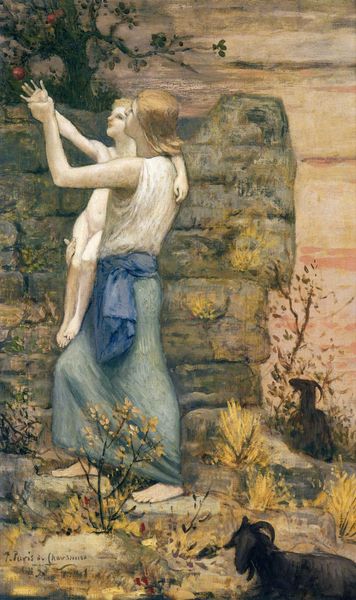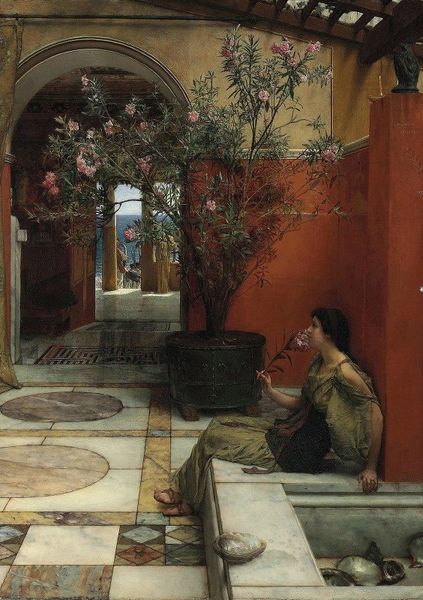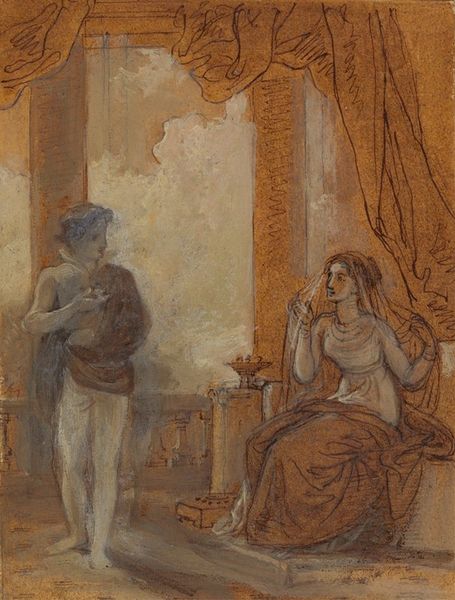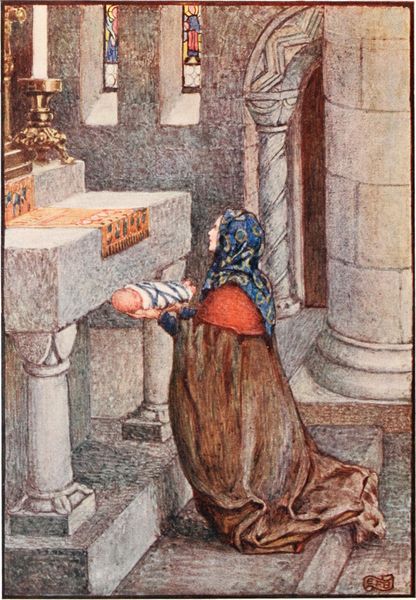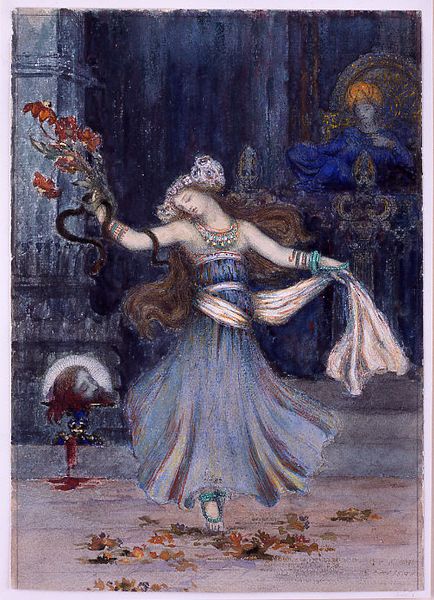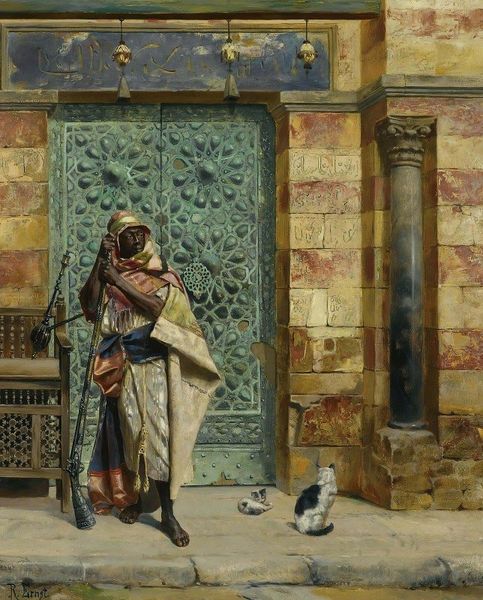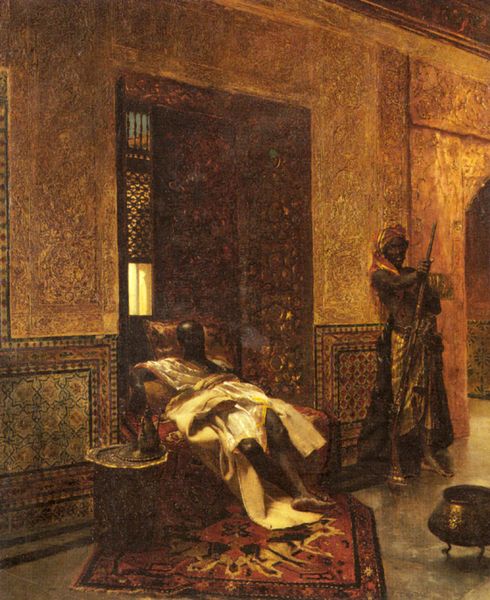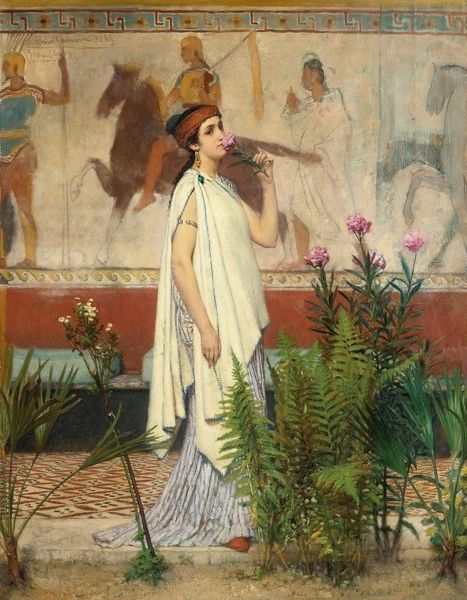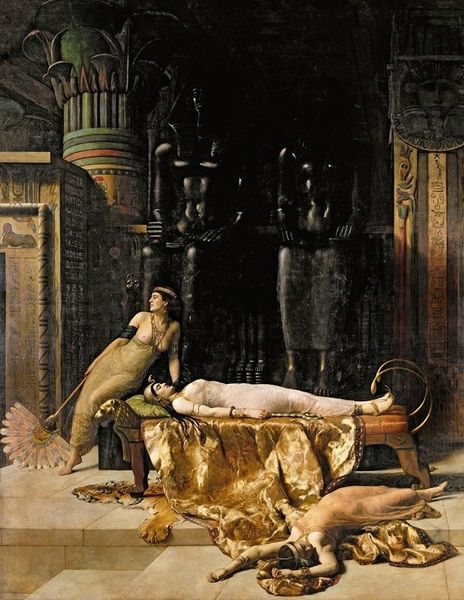
Dimensions: 98 x 215 cm
Copyright: Public domain
Curator: Let’s explore Vardges Sureniants' “Semiramis and Dead Ara the Beautiful,” crafted with oil paints back in 1899. It offers a poignant window into a specific interpretation of ancient history. Editor: My first impression is one of overwhelming sadness and stillness. The colors are muted, almost drained, adding to the somber mood. The woman looks utterly defeated. Curator: Exactly. Sureniants, deeply immersed in Armenian history and culture, draws on the legendary tale of the Assyrian Queen Semiramis and the Armenian King Ara the Beautiful. This piece offers a compelling entry point into discussing orientalism and its complex entanglement with power dynamics and representation of gender and nationhood in the late 19th century. Editor: The painting immediately brings to mind ancient funerary iconography. The dead king laid out almost ritually, and Semiramis, with that tiara-like band across her forehead... it suggests both mourning and a certain regal distance. This depiction highlights a long-standing visual trope, which positions the female figure as an ambiguous figure of power and mourning across cultures. Curator: Her placement also matters, set against the detailed, ornamented walls that subtly symbolize the kingdom's opulent artifice built on a bloody conquest. Her melancholy underscores the weight of that power and its ultimate emptiness. In this interpretation, it's impossible to detach it from narratives of colonial encounter and power. The figure of Ara, often interpreted as a symbol of Armenian resilience, is now rendered powerless. What commentary is Sureniants trying to construct? Editor: It does prompt questions about agency. I see Semiramis framed by what appear to be repeating carved relief symbols on the wall, almost trapping her, though I admit the reading may require closer viewing. The objects scattered around Ara's resting place -- helmet, ewers -- those are almost symbolic attributes adding layers to his identity. Curator: Perhaps Sureniants invites a reconsideration of Semiramis – not just as a queen, but a woman ensnared in patriarchal power structures. Her sadness hints at this tragic potential for female leaders within rigid imperial systems. Editor: And yet, that stillness might suggest that Semiramis is processing, making decisions that the artist chooses to leave unknown, allowing space for alternative narrative endings and female agency. Curator: Viewing "Semiramis and Dead Ara the Beautiful" encourages a critical approach to how history is framed and re-framed depending on various contexts. Editor: A very moving and, at the same time, quietly unsettling visual meditation. Thank you.
Comments
No comments
Be the first to comment and join the conversation on the ultimate creative platform.

